China Seed Treatment Market Size
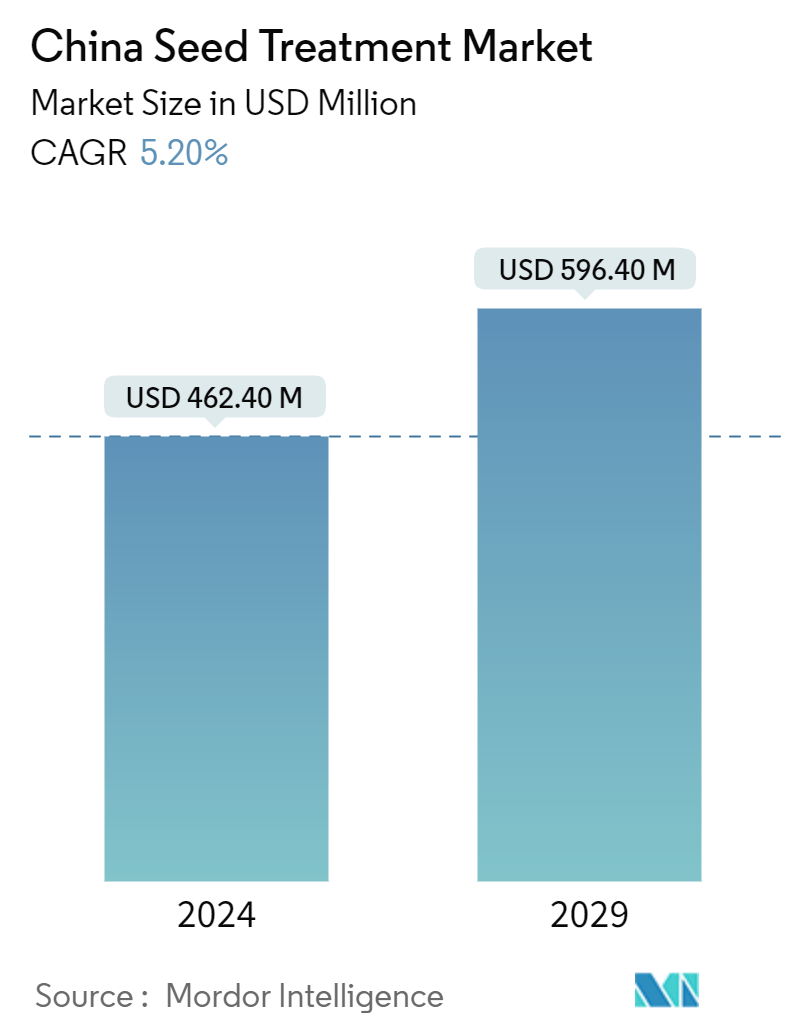
| Study Period | 2019 - 2029 |
| Base Year For Estimation | 2023 |
| Forecast Data Period | 2024 - 2029 |
| Market Size (2024) | USD 462.40 Million |
| Market Size (2029) | USD 596.40 Million |
| CAGR (2024 - 2029) | 5.20 % |
Major Players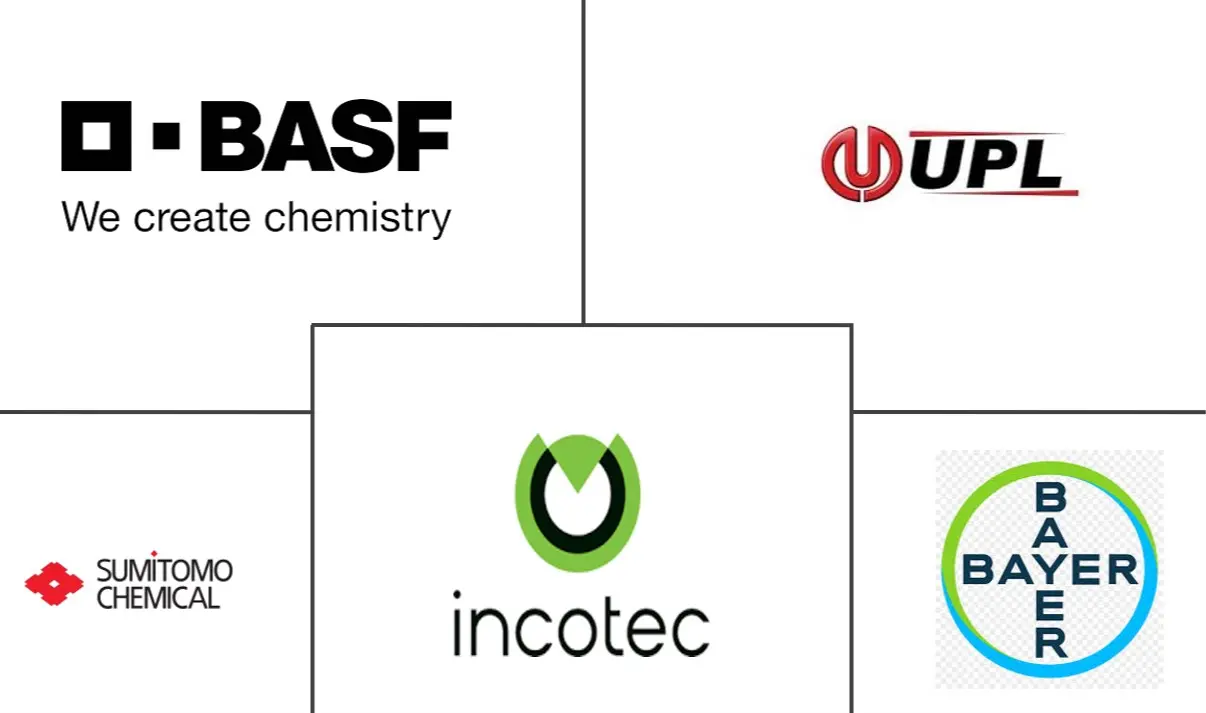
*Disclaimer: Major Players sorted in no particular order |
China Seed Treatment Market Analysis
The China Seed Treatment Market size is estimated at USD 462.40 million in 2024, and is expected to reach USD 596.40 million by 2029, growing at a CAGR of 5.20% during the forecast period (2024-2029).
In China, growth in the seed treatment industry is largely fuelled by the need for increasing farm productivity and rising concerns over its quality and safety due to the harmful effects of chemicals on the environment. Growing seed costs, shorter crop rotations, and greater use of multi-component products show positive growth for the seed treatment market.
China's seed industry is highly fragmented and mostly dependent on public institutions for research and development. Inconsistent seed quality and minimal farmer servicing by seed companies have limited yield growth. Rising food demand and limited arable land in China have made this a pressing issue.
China Seed Treatment Market Trends
Rising Cost of High Quality Seeds
The high costs associated with hybrids and genetically modified seeds are a major factor that is driving the growth of the seed treatment market in China. With higher regulatory issues relating to fumigation and foliar application of pesticides, seed treatment is being increasingly considered by farmers as a mode to protect high investments made on good quality seeds. Owing to the increasing demand for high-quality seeds with desirable agronomic traits, the cost of seeds is increasing. Seed treatment provides better crop establishment, in terms of healthy germination and protection against seed-borne and soil-borne diseases at a relatively low cost than other crop protection measures.
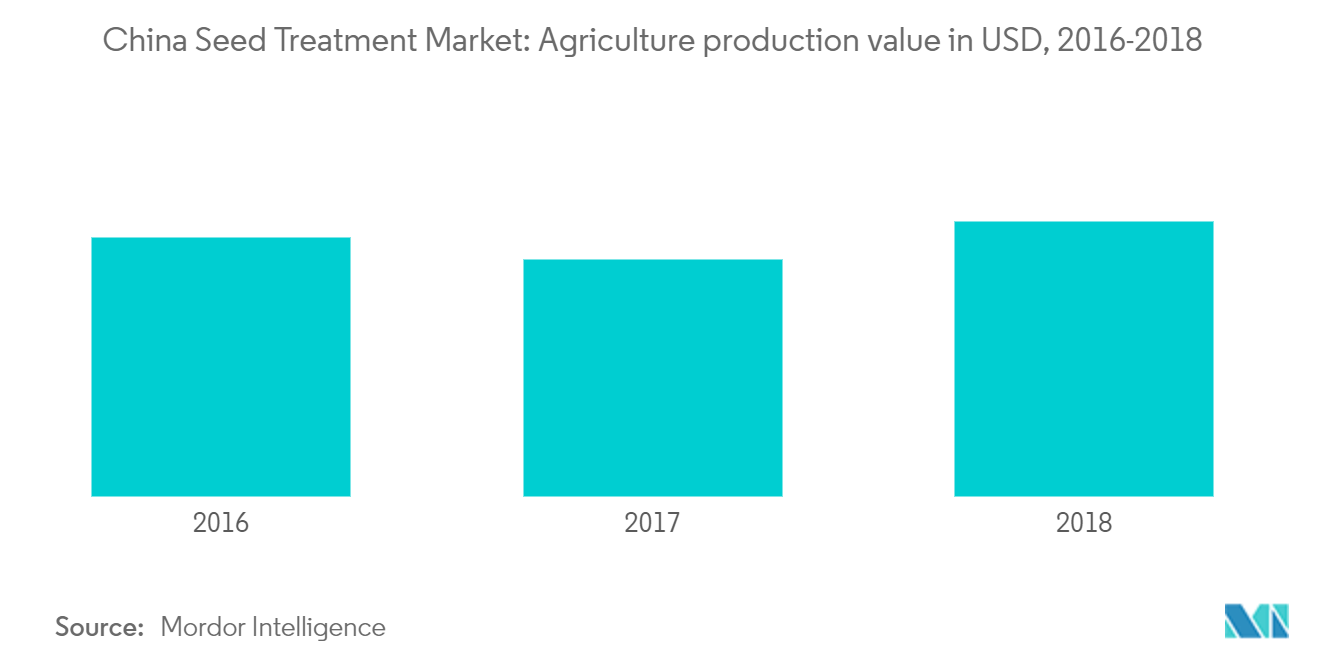
Decreasing Area Under Field Crops
In China, the cultivation area for field crops decreased from 130.5 million hectares in 2017 to 127.8 million hectares in 2021, representing 71.4% of the total cultivated area. Corn dominated the field crop landscape with a share of 34.2%, followed by rice and wheat at 23.6% and 18.3%, respectively. This decreasing cultivation area is projected to drive up seed treatment demand to improve productivity.
China typically divides its field crop production into two seasons: summer/spring (April-September) and winter. Spring crops encompass early corn, early rice, early wheat, and cotton, while winter crops focus on winter wheat and rapeseed. Rice and corn, however, take precedence in China's agricultural landscape, accounting for a third of the nation's grain output. As the world's leading rice producer, China allocated 30 million hectares for rice farming in 2022, yielding a harvest of 210 million tonnes. Key rice-producing regions span Heilongjiang, Hunan, Jiangxi, Hubei, Jiangsu, Sichuan, Guangxi, Guangdong, and Yunan. China's corn production for 2022-23 is projected to hit 277.2 million tonnes, up by 4.6 million tonnes from the previous year, primarily due to improved harvests. The Northeast provinces of Heilongjiang, Jilin, and Inner Mongolia stand out as major corn-growing regions.
While spring remains the primary cropping season, it faces some challenges, particularly during the hotter months of June and July. Rice, a staple for millions in China, is particularly affected. The combination of high temperatures and low precipitation increases the pest infestation driving the seed treatment market.
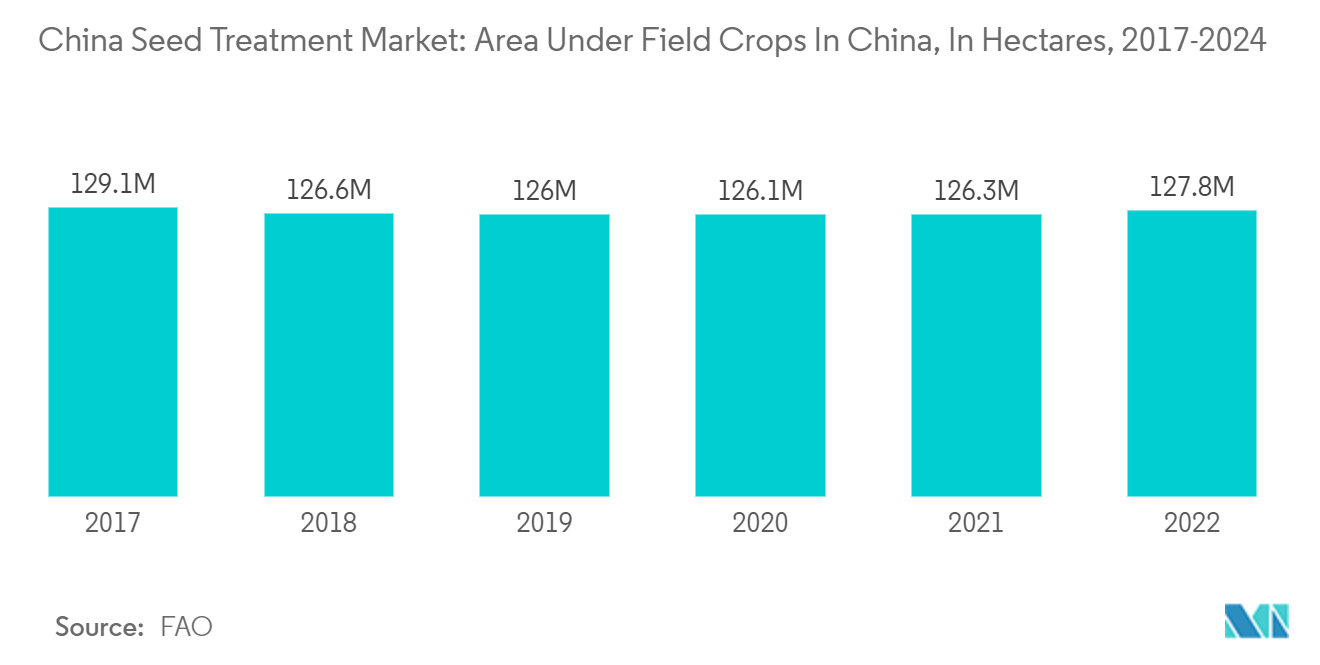
China Seed Treatment Industry Overview
The seed treatment market is highly consolidated. Several big players, like UPL limited, Bayer CropScience, Incotec China, AG, BASF SE, Adama, and few others, occupy a major portion of the market studied, having a diverse and increasing product portfolio.
Companies are focusing majorly on new product launches, mergers, and acquisitions, which help in increasing their market shares. The development of bio-based seed treatment products has massive potential for expansion during the forecast period, with advantages, like environmental sustainability and more flexibility in regulations for the development and launch of new products.
China Seed Treatment Market Leaders
-
UPL Limited
-
Bayer CropScience AG
-
Sumitomo Chemicals
-
BASF SE
-
Incotec China
*Disclaimer: Major Players sorted in no particular order
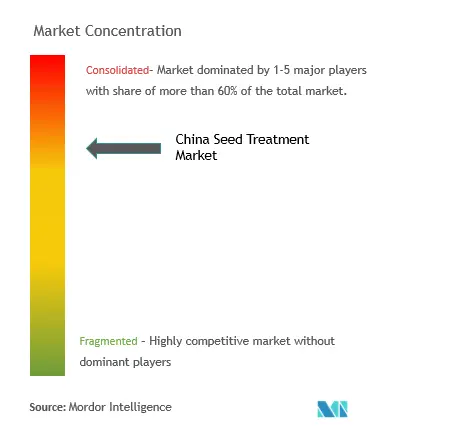
China Seed Treatment Market News
January 2022: In the Chinese region of Ningxia, Shandong Weifang Rainbow Chemical Co., Ltd. opened a new R&D Center, which has strengthened its R&D capabilities to develop new pesticides.
March 2021: BASF increased its innovation in seeds, plant protection products, and digital services for sustainable farming. The company aims to boost sales of agricultural solutions by 7% annually, making a substantial contribution to sustainability.
China Seed Treatment Market Report - Table of Contents
1. INTRODUCTION
- 1.1 Study Deliverables
- 1.2 Study Assumptions
- 1.3 Scope of the Study
2. RESEARCH METHODOLOGY
3. EXECUTIVE SUMMARY
4. MARKET DYNAMICS
- 4.1 Market Overview
- 4.2 Market Drivers
- 4.3 Market Restraints
-
4.4 Porter's Five Force Analysis
- 4.4.1 Bargaining Power of Suppliers
- 4.4.2 Bargaining Power of Buyers/Consumers
- 4.4.3 Threat of New Entrants
- 4.4.4 Threat of Substitute Products
- 4.4.5 Intensity of Competitive Rivalry
5. MARKET SEGMENTATION
-
5.1 Function
- 5.1.1 Fungicide
- 5.1.2 Insecticide
- 5.1.3 Nematicide
-
5.2 Crop Type
- 5.2.1 Commercial Crops
- 5.2.2 Fruits & Vegeatbles
- 5.2.3 Grains and Cereals
- 5.2.4 Pulses & Oilseeds
- 5.2.5 Turf & Ornamental Crops
6. COMPETITIVE LANDSCAPE
- 6.1 Most Adopted Strategies
- 6.2 Market Share Analysis
-
6.3 Company Profiles
- 6.3.1 Adama Ltd
- 6.3.2 BASF SE
- 6.3.3 Bayer CropScience AG
- 6.3.4 Incotec China
- 6.3.5 Syngenta
- 6.3.6 FMC Corporation
- 6.3.7 Sumitomo Chemicals
- 6.3.8 Shandong Weifang Rainbow Chemical Co., Ltd.
- 6.3.9 Hailir Pesticides and Chemicals Group Co. Ltd
- *List Not Exhaustive
7. MARKET OPPORTUNITIES AND FUTURE TRENDS
** Subject To AvailablityChina Seed Treatment Industry Segmentation
The corporations in seed treatment operate in B2B, as well as B2C business format. The Chinese seed treatment market is segmented by function(fungicide, insecticide, and nematicide) and crop type (commercial crops, fruits and vegetables, grains and cereals, pulses and oilseeds, and turf and ornamental crops).
| Function | Fungicide |
| Insecticide | |
| Nematicide | |
| Crop Type | Commercial Crops |
| Fruits & Vegeatbles | |
| Grains and Cereals | |
| Pulses & Oilseeds | |
| Turf & Ornamental Crops |
China Seed Treatment Market Research FAQs
How big is the China Seed Treatment Market?
The China Seed Treatment Market size is expected to reach USD 462.40 million in 2024 and grow at a CAGR of 5.20% to reach USD 596.40 million by 2029.
What is the current China Seed Treatment Market size?
In 2024, the China Seed Treatment Market size is expected to reach USD 462.40 million.
Who are the key players in China Seed Treatment Market?
UPL Limited, Bayer CropScience AG, Sumitomo Chemicals, BASF SE and Incotec China are the major companies operating in the China Seed Treatment Market.
What years does this China Seed Treatment Market cover, and what was the market size in 2023?
In 2023, the China Seed Treatment Market size was estimated at USD 438.36 million. The report covers the China Seed Treatment Market historical market size for years: 2019, 2020, 2021, 2022 and 2023. The report also forecasts the China Seed Treatment Market size for years: 2024, 2025, 2026, 2027, 2028 and 2029.
China Seed Treatment Industry Report
Statistics for the 2024 China Seed Treatment market share, size and revenue growth rate, created by Mordor Intelligence™ Industry Reports. China Seed Treatment analysis includes a market forecast outlook 2029 and historical overview. Get a sample of this industry analysis as a free report PDF download.



